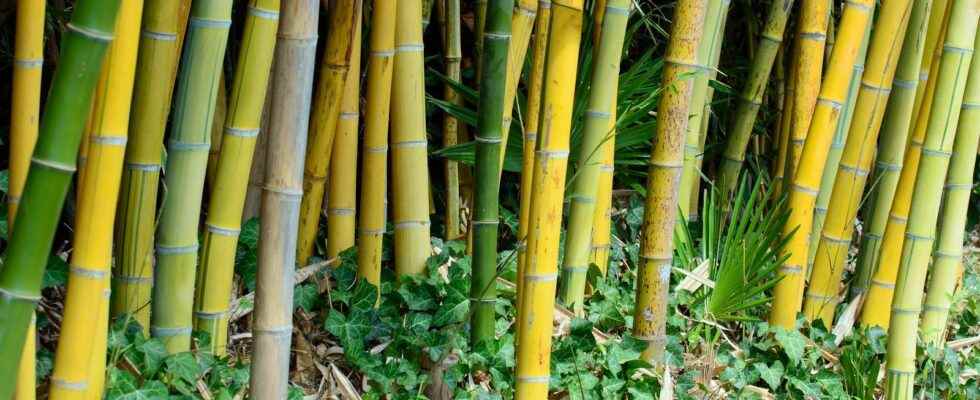Phyllostachys is the most widely grown bamboo in gardens. Often trailing, phyllostachys bamboos can become cumbersome. In a bed or in a pot, you can create decorations or green hedges all year round. Depending on the varieties, you can play with the colors and heights.
With green, orange, yellow or black canes, the varieties of phyllostachys are not lacking in charm. Fast growing, the phyllostachys will bring a touch of exoticism to your garden or your terrace.
Appellations
The phyllostachys (Phyllostachys) is part of the family of Poaceae (Poaceae).
Botanical description of phyllostachys
Phyllostachys bamboo produces stubble (canes) that can be more than 10 meters high and is covered with small, more or less narrow leaves of different colors depending on the variety. The stubble can be yellow, more or less dark green, black, solid color or streaked spotted or with zigzags. It is renowned for its rapid growth therefore widely used for create a screen or a lush garden. The choice is vast.
Among all the phyllostachys, here are some species to discover:
- Phyllostachys aurea : medium-sized creeping variety. The ‘Koi’ variety has yellow culms streaked with green;
- Bambusoid Phyllostachys : very tall creeping variety. The variety ‘Castillonnis’ has yellow canes streaked with green;
- Phyllostachys glauca : medium-sized creeping variety. The ‘Yunzhu’ variety has black spotted green culms;
- Phyllostachys nigra : medium-sized creeping variety that produces very original black culms;
- Phyllostachys vivax : very tall creeping variety. The variety ‘Aureocaulis’ has yellow canes streaked with green;
- Phyllostachys aureosulcata : medium-sized creeping variety that produces shiny green canes.
Good to know: if you want to install a non-marking bamboo in your garden, prefer to buy a fargesia, with equally decorative culms and foliage.
Origins of phyllostachys
The phyllostachys originates from China.
Cultural requirements of phyllostachys
This bamboo also likes Sun, in partial shade and even sometimes in shade. Spare him exposures with winds violent. Choose the location well because its rhizomes are creeping, invasive and it can reach several meters in height. When planting, install an anti-rhizome barrier to channel its roots. Very resistant, they will withstand temperatures below -20°C. No need for winter protection.
Use of phyllostachys
On a balcony or terrace, plant it alone in a pot or several well-aligned feet to create a plant barrier or a privacy hedge. In the garden, you can plant them to draw paths or alleys, taking care to place anti-rhizome barriers so as not to be invaded. At the base, you can plant beautiful decorative foliage such as hostas, grasses or perennial geraniums to dress up that empty space. Get inspired by japanese gardens to develop a massif of rockeries with some boxwood and bonsai trimmed, not japanese surrounded by azaleas. Also use phyllostachys to vegetate and hide a wall abyss. Play with yellow, black or green canes to illuminate certain corners of the garden.
You will also be interested
Interested in what you just read?
